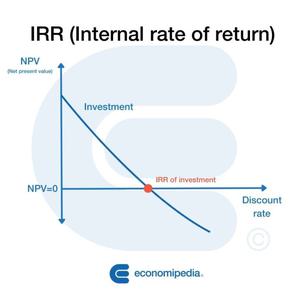In the complex realm of valuable investments, grasping the differences among annualized return, actual return, and Internal Rate of Return (IRR) goes beyond mere financial knowledge; it is essential for strategy. For wealthy individuals managing intricate investment portfolios, these measurements act as important standards. However, misunderstanding them can result in expensive errors. Let’s examine closely and reveal the key distinctions that separate these return metrics.
Annualized Return: The Projection Pitfall
The annualized return is commonly viewed as a simple method for assessing how well an investment does over time. This figure is derived by extending the return of an investment from a certain time frame to a one-year estimate, allowing for easy comparison. For instance, if an investment increases by 10% in six months, its annualized return would be 21%, assuming it compounds.
Yet, this measure has a major drawback: it presupposes that the investment will keep yielding the same return endlessly. In truth, the financial markets can be unpredictable, and past results do not guarantee what will happen in the future. Wealthy investors frequently come across investment options with appealing annualized return estimates that might overlook changes in the market, regulations, or specific risks tied to companies. Depending only on annualized return can result in inflated expectations about profits while minimizing the potential dangers involved.
Actual Return: The Reality Check
Conversely, the actual return indicates how an investment truly performs in the real world. This measure includes the original amount invested, any extra money put in or taken out, and the investment’s value at a specific time. Unlike the annualized return, which guesses future performance, the actual return focuses solely on what has already taken place.

Calculating the actual return can be difficult for high-spending investors who have complex portfolios with many transactions and different types of assets. It involves careful tracking of all cash flows, which includes dividends, interest, and any capital gains or losses. Additionally, external factors like currency changes (for investments abroad) and tax impacts can also affect the actual return, making its calculation and understanding more complicated.
IRR: The Time - Value Conundrum
To calculate the IRR in simple terms, you need to find the discount rate that makes the present value of the future cash inflows equal to the initial investment. This makes it a key tool in capital budgeting and financial analysis, enabling decision-mSimply put, IRR reflects the expected rate of return an investment will yield over its duration, while also considering the timing of cash inflows and outflows.

This measure is particularly beneficial for assessing investments with unpredictable cash flows, like venture capital investments, real estate ventures, or private equity deals. Nonetheless, it has some drawbacks.To tackle this issue, analysts frequently utilize the modified internal rate of return (MIRR). This approach considers reinvestment at a more practical rate, like the cost of capital or a designated reinvestment rate. This adjustment provides a more conservative and practicaMoreover, for investments that experience multiple shifts in cash flow signs—such as an initial investment followed by inflows and then additional outflows—this can result in multiple IRR values, creating confusion in interpretation.
Navigating the Return Landscape
For individuals with significant wealth, making smart investment choices hinges on the combination of various return metrics. While the annualized return offers a quick way to compare options, it must always be accompanied by a thorough examination of the actual return to grasp true performance. On the other hand, IRR is crucial when evaluating the profitability of intricate, long-term investments, but it demands careful attention to its foundational assumptions.

By recognizing the distinct features and limitations of annualized return, actual return, and IRR, savvy investors can achieve a fuller understanding of their investment landscape. This insight not only aids in assessing past results but also enhances the ability to forecast more accurately and plan strategically for future financial management. In the competitive finance arena, attention to detail is vital, and mastering these return metrics is essential for achieving investment success.

Green Energy Investments: A Guide to Renewable Profits

Robo-Advisors and Automated Financial Planning: A New Era of Personalized Investment

How to Improve Financial Stability After a Job Loss

Soaring profits are now the right time to buy Bank of America?

As A Pensioner, Can I Apply For A Car Loan?

The Yield Curve as the Economic Prophecy of the Financial Market

How to Get Financial Help for Medical Bills
